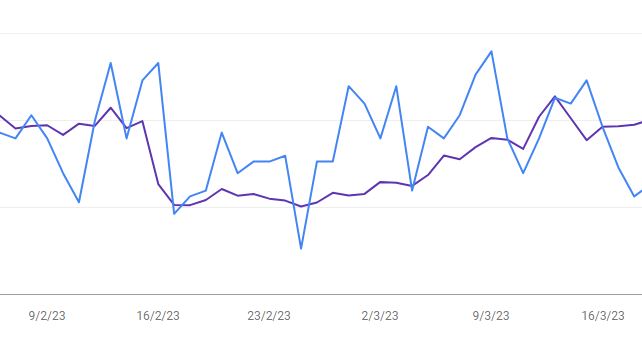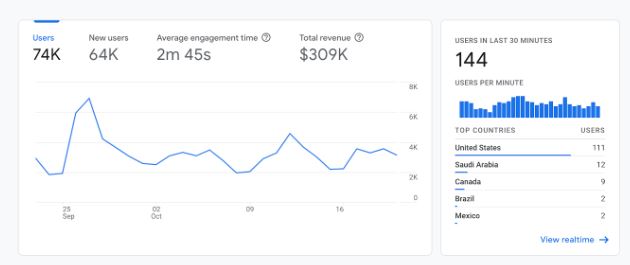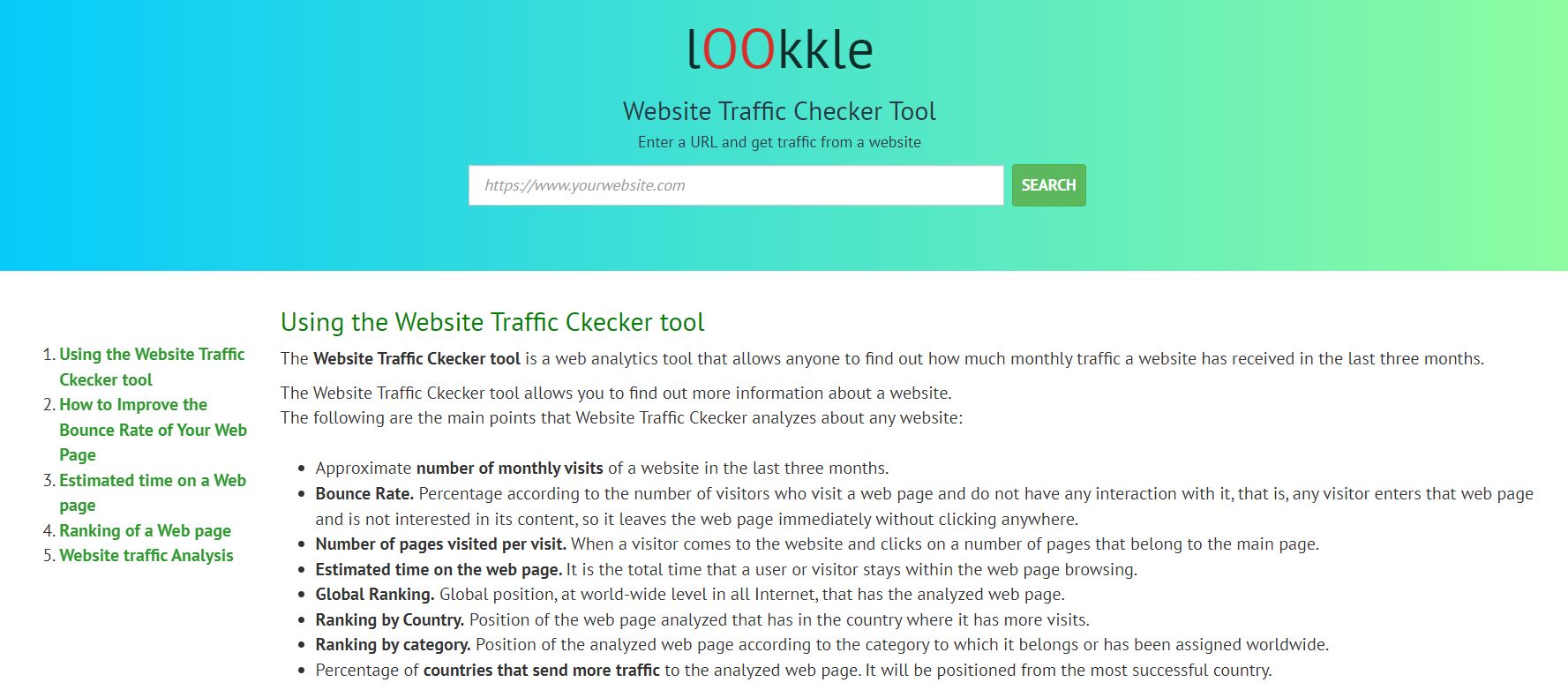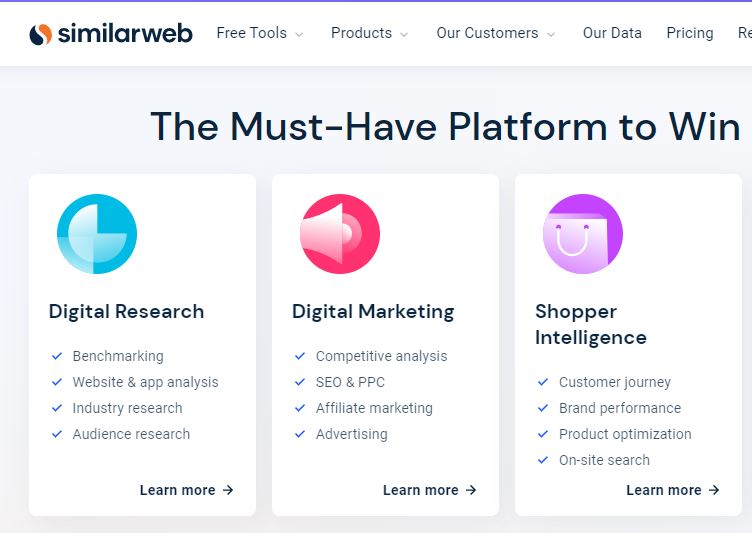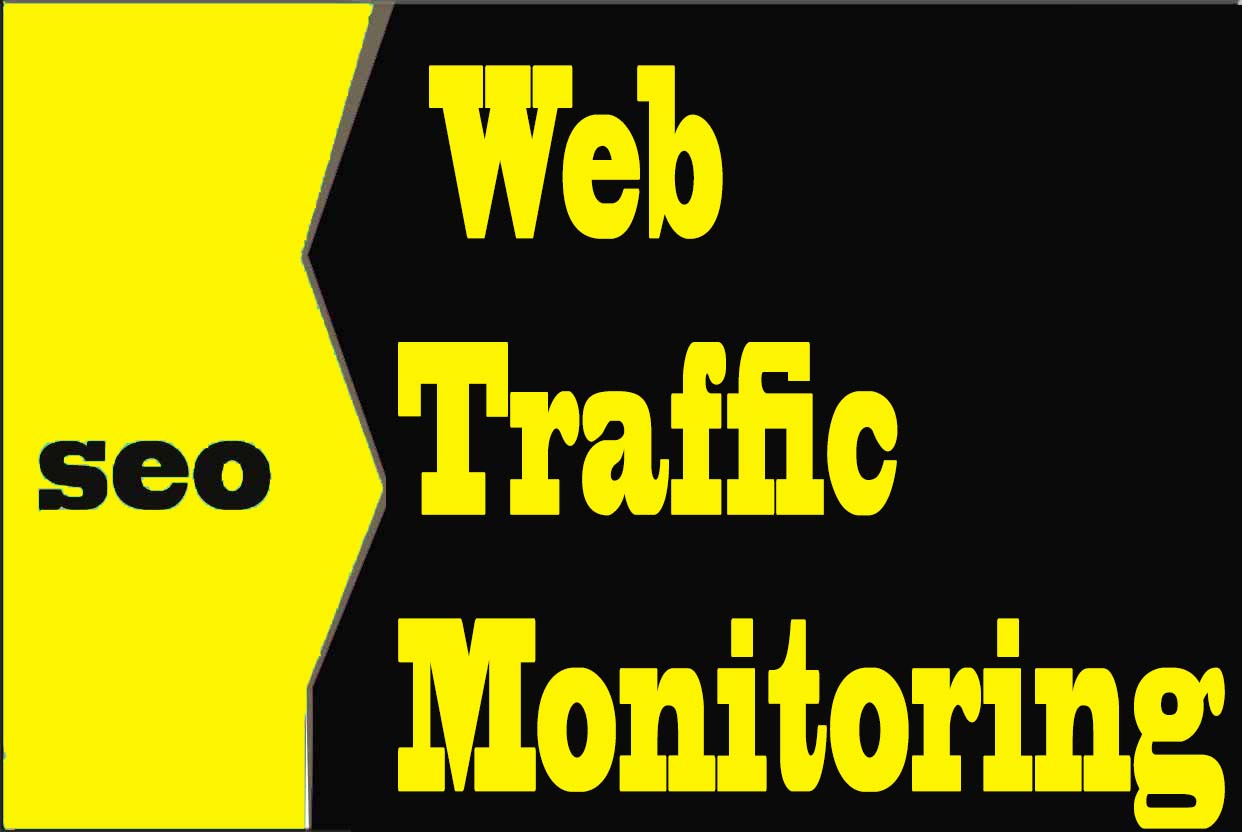
Overview of web traffic monitoring
Web traffic monitoring is the process of analyzing users visiting a website. It involves tracking, reviewing and reporting data to measure web activity and gain insight into visitor behavior.
Web traffic monitoring is essential for businesses and organizations to evaluate the effectiveness of their online presence and make informed decisions regarding their website's content, design, and marketing strategies.
There are various types of information required for monitoring web traffic:
- The number of visitors to a website is a crucial metric that provides insight into the website's popularity and reach.
- The average number of page views per visitor is another important metric that indicates the level of engagement visitors have with the website.
- Demographic data such as age, gender, interests, and shopping habits can also be collected to help businesses better understand their target audience and tailor their online marketing efforts accordingly.
Types of Information Required for Monitoring Web Traffic
- Monitoring web traffic is an essential aspect of managing a website.
Basic traffic metrics are fundamental types of information required for monitoring web traffic:- Visitors. How many people are visiting the website.
- Sessions. How long people stay on the website.
- Pageviews How many pages people are viewing.
- Traffic sources are another critical type of information required for monitoring web traffic.
Understanding the different types of traffic sources can help website owners identify which sources are driving the most traffic and which sources may need improvement.
There are four main types of traffic sources:- Organic. Organic traffic comes from search engines
- Referral. Referral traffic comes from other websites.
- Direct. Direct traffic comes from users typing in the website's URL directly
- Paid. Paid traffic comes from online advertising
- User behavior is the third type of information required for monitoring web traffic. Understanding these metrics can help website owners identify areas for improvement and make data-driven decisions to optimize website performance:
- Bounce rate is the percentage of users who leave the website after viewing only one page
- Session duration is the length of time users spend on the website
- Conversion rate, provide insight into how users are interacting with the website. That is, if a user enters a site and clicks on an image, a link that interests us,...
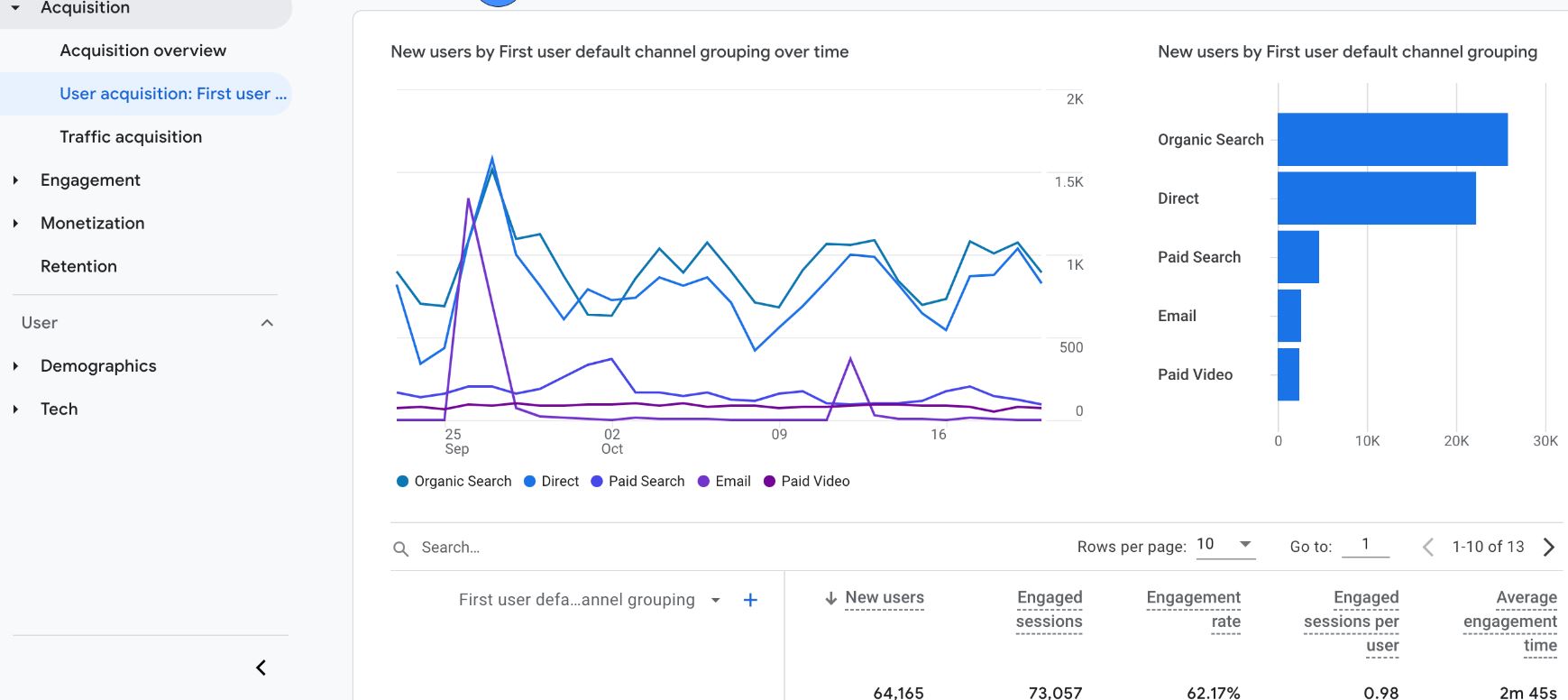
Improve your web site performance by monitoring web traffic
To get the most out of a website, it is essential to understand how users interact with it. This is where web traffic analysis tools come in.
Web traffic analysis tools, such as Google Analytics, can provide valuable information about how users interact with your website. These tools track and report on various aspects of website traffic, including the geographic location of users, the device used to access the website, the pages visited, the time spent on each page, and the actions taken by users (such as clicking on links or filling out forms). By analyzing this data, you can gain a better understanding of how users interact with your website and identify areas for improvement.
For example, if you notice that users tend to leave your website shortly after arriving (known as a high bounce rate), it may be an indication that your website is not engaging enough. In this case, you can look to improve the design, content and overall user experience of your website to encourage users to stay longer. Alternatively, if you notice that users are spending a lot of time on a particular page, it may be an indication that the content on that page is valuable and engaging. In this case, you can look to create more content similar to that page to keep users engaged.
By analyzing metrics such as page views, bounce rates and conversion rates, you can identify areas for improvement and optimize your website accordingly. For example, if you notice that users are not completing the desired action on your website (such as making a purchase or filling out a form), you can optimize the conversion process. This may involve simplifying the checkout process or making the form-filling process more user-friendly.
Web traffic analysis tools can also help you identify which pages on your website are performing well and which need improvement. You can use this information to optimize your website by ensuring that pages that work well are given more prominence and pages that need improvement are redesigned or removed altogether.
Regular monitoring of web traffic can help you track the success of marketing campaigns, identify trends, and make data-driven decisions to improve the overall performance of your website. For example, if you run a marketing campaign to promote a particular product or service, you can track web traffic to that product or service page to see how many users visit, how long they stay, and whether they are making a purchase. purchase. This information can help you determine the effectiveness of the marketing campaign and make necessary adjustments.
In addition, web traffic analysis tools can help you identify trends in user behavior over time. For example, you may notice that certain pages on your website are becoming more popular or that users are increasingly accessing your website from mobile devices. Armed with this information, you can make data-driven decisions on how to improve your website to better meet the needs of your users.
Improve customer experience by monitoring web traffic
Analyzing web traffic data can reveal patterns and trends in customer behavior. By looking at metrics such as conversion rates, companies can see which pages of their website are converting the most customers. This can help them identify which aspects of the website are performing well and which need improvement. By analyzing the flow of visitor behavior, companies can also see the path customers take through the website, which can help them identify obstacles or areas for improvement.
By using this information, companies can make changes to their website to improve the customer experience and increase conversions. For example, if data shows that customers are abandoning the website after only a few seconds, companies may need to improve website load time. If customers abandon their shopping carts, companies may need to simplify the checkout process. By making these changes, companies can improve the customer experience, which can lead to higher conversions and increased revenue.
By understanding customer behavior, companies can make changes to improve the customer experience and increase conversions. In today's digital age, companies that do not track web traffic and use the data to improve their website are at a disadvantage. Therefore, it is important for companies to invest in web tracking tools and use the data to optimize their website to provide the best possible customer experience.
Strategy to create content and increase visits to a website
The first step in creating content to increase website visits is to identify the target audience and their interests. Knowing who the target audience is and what they are interested in will help in creating content that will resonate with them. For example, if the target audience is millennials interested in health and wellness, the content should focus on topics such as healthy eating, exercise, and mental health.
To identify the target audience, research can be conducted using various tools such as Google Analytics and social media insights. This will help in understanding the demographics of the audience, their interests, and the type of content they engage with the most. Once the target audience is identified, it becomes easier to create content that will appeal to them.
Moreover, it is important to note that the target audience may change over time, and therefore, it is crucial to keep track of the audience's changing interests and preferences. Regularly updating the content to cater to the target audience's changing needs will help in retaining and attracting new visitors to the website.
Once the target audience is identified, research can be conducted to determine what type of content will be most engaging and valuable to them. This can be done by looking at the content that is already available on the internet and analyzing what is working and what is not.
For instance, if the target audience is interested in technology, researching the most popular technology blogs and analyzing the type of content they produce can help in creating valuable and engaging content. Additionally, it is essential to create content that adds value to the target audience's lives. This can be done by providing solutions to their problems, answering their queries or providing new and insightful information.
Visual content such as videos, infographics, and images can also be used to make the content more engaging and shareable. This will not only increase website visits but also help in building a loyal audience.
Strategies such as search engine optimization (SEO), social media promotion, and email marketing can be used to drive traffic to the website and increase visibility:
- SEO involves optimizing the website to rank higher in search engine results, making it easier for the target audience to find the website. This can be done by using relevant keywords, creating high-quality backlinks, and optimizing the website's structure and content.
- Social media promotion involves promoting the website's content on social media platforms such as Facebook, Twitter, and Instagram. This will not only help in driving traffic to the website but also increase the content's visibility by reaching a wider audience.
- Email marketing involves sending newsletters and promotional emails to the target audience to keep them engaged and updated with the latest content on the website. This will help in building a loyal audience and drive traffic to the website.
Best websites for traffic analysis
In the fast-paced digital world, it has become essential for businesses to have an online presence to attract potential customers.
To effectively enhance this online presence, website traffic analysis plays a crucial role. By analyzing website traffic, businesses can understand their audience and make informed decisions to improve their website's performance. In this regard, several tools are available to analyze website traffic, and the following essay describes the three best websites for traffic analysis:
- Google Analytics is a widely used website traffic analysis tool.
It is a free tool that provides robust features for tracking user behavior and demographics.
With Google Analytics, businesses can track the number of visitors to their website, monitor their behavior, and understand the sources of their traffic. Additionally, it provides insights into the most visited pages, bounce rates, and the average time spent on the website. Google Analytics also enables businesses to understand their audience's demographics, including age, gender, and location. This information is crucial for businesses to tailor their marketing strategies and improve their website's performance.
To monitor web traffic, companies and organizations can use web analytics tools such as Google Analytics. These tools track various metrics such as:
- Page views.
- Unique visitors.
- Bounce rates.
- Session duration.
-
Lookkle Web Traffic Checker is a web traffic analysis and ranking tool that allows users to monitor trends, views, country analysis, visits, bounce rate and more.
Lookkle Web Traffic Checker data sources is an aggregation of publicly available online information from search engines like Google.Lookkle web traffic checker provides analysis and evaluation of the competition by analyzing the web traffic and the ranking of any desired page.
If you know what the competing websites are, you can find out the approximate traffic of these sites and the ranking, as well as their evolution in recent months, to compare how these sites have grown with respect to your website and thus draw conclusions about possible changes that want to do on your site.
Lookkle web traffic checker calculates website rank based on several criteria: monthly unique visitors and page views, to represent a site's position among competitors.
By comparing the performance of their own website with that of their competitors, companies can identify areas for improvement and adjust their strategies accordingly.
- SimilarWeb is a competitive analysis tool that provides insights into a website's traffic sources, audience interests, and engagement metrics. It is a comprehensive tool that allows businesses to understand their competitors' websites and compare their website's performance with their competitors.
SimilarWeb provides detailed information on the sources of traffic, including referrals, direct traffic, organic search, and paid search. It also provides insights into the audience's interests, including the websites they visit, the content they consume, and the devices they use. Additionally, SimilarWeb provides engagement metrics such as the bounce rate and the average time spent on the website. This information is helpful for businesses to improve their website's performance and stay ahead of their competitors.
- SEMrush is a comprehensive digital marketing tool that includes website traffic analysis, keyword research, and SEO optimization features. It is a paid tool that provides businesses with detailed information on their website's traffic sources, including the organic and paid search, referrals, and social media.
Additionally, SEMrush provides insights into the keywords that bring traffic to a website and the search engine rankings of the website's pages.
It also provides insights into the website's backlinks, which are crucial for improving the website's SEO. SEMrush is a powerful tool that enables businesses to optimize their website's performance, improve their SEO rankings, and attract more traffic.
Tips on SEO and Online Business
Next Articles
Previous Articles
